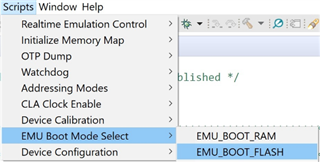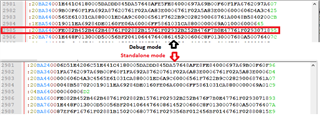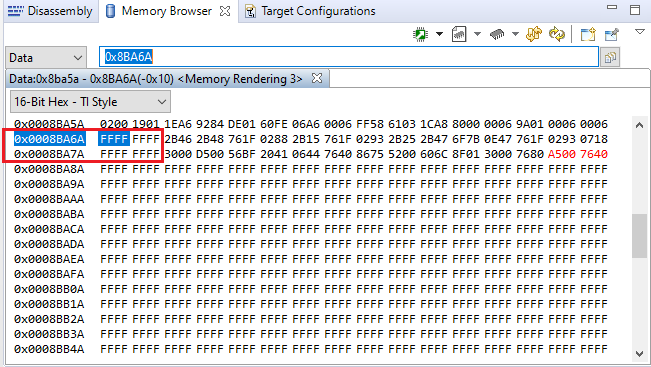Other Parts Discussed in Thread: C2000WARE
Hello,
I'm using CPU1 and CPU2 on TMS320F28379D
In my software, I want to reprogram FLASH for CPU1 and CPU2 with an HEX file on a SD card (using SPI-A).
For information, on a previous program, I used only CPU1 and this function (FLASH reprogramming with SD card) works fine.
The reprogramming process is as follow :
- Read HEX file information's
- Erase CPU1 Flash sectors
- Write HEX file data's in FLASH
- Reboot CPU1 with watchdog
Below how I want to proceed :
- In normal state, CPU1 program and CPU2 program are synchronized with IPCs flags.
- If CPU1 reprogramming is in progress; CPU2 is in "idle" state. SPI-A is drived by CPU1.
- When CPU1 reprogramming is done, CPU1 send an IPC (IPC0) flag to CPU2 to start reprogramming (interrupt on CPU2),change SPI-A ownership (CPU1 -> CPU2) then reboot.
- CPU2 reprogramming is in progress; CPU1 is in "idle" state. SPI-A is drived by CPU2.
- When CPU2 reprogramming is done, CPU2 reboot.
- When both core will reboot, we will be in normal state.
I can reprogram CPU1 FLASH correctly, but I have some questions for CPU2 reprogramming :
- During CPU1 Flash programming process, SPI-A is drived by CPU1. I tried to change SPI-A ownership to CPU2 after CPU1 reboot, but it seems it doesn't works. Why ?
- After CPU1 programming and reboot, I already have "Illegal_ISR", maybe it's due to the Debug mode on Code Composer after a reboot. How can I debug CPU2 program ?
Regards,













